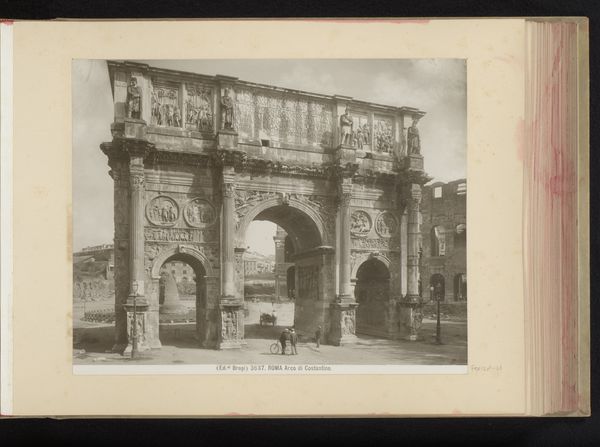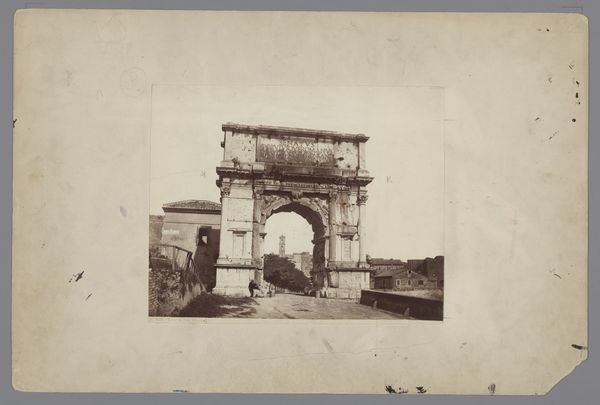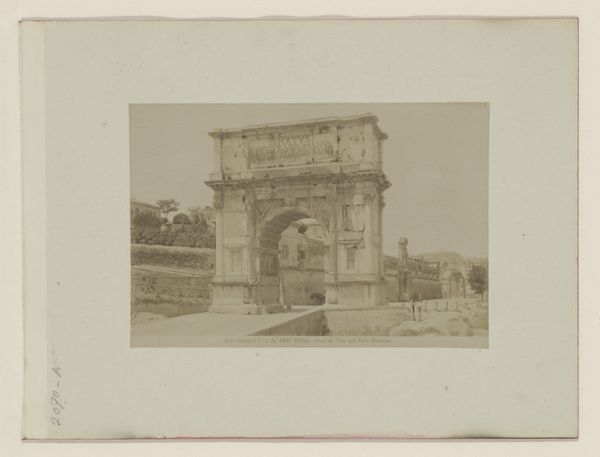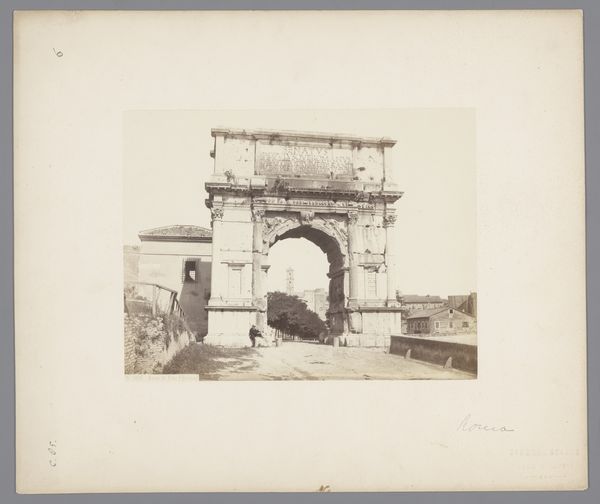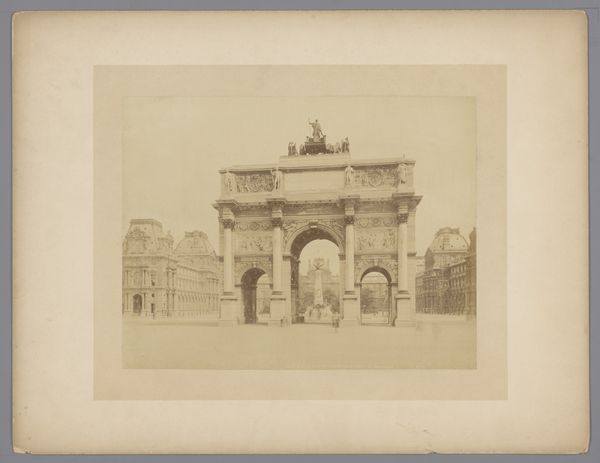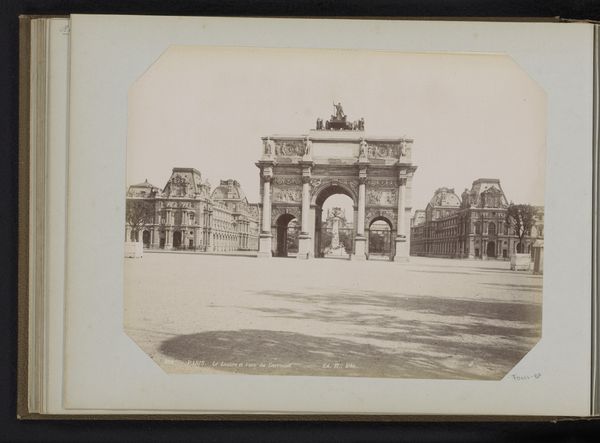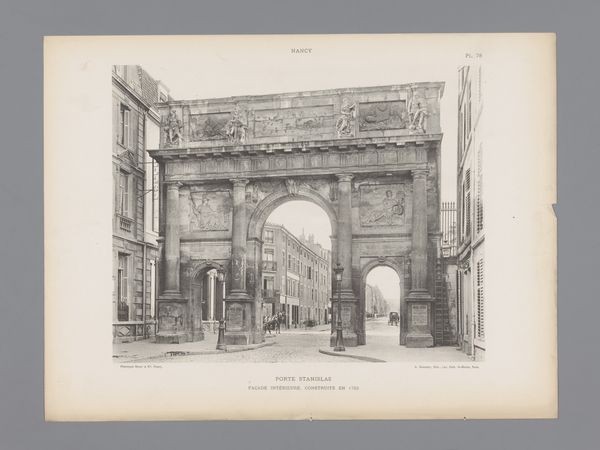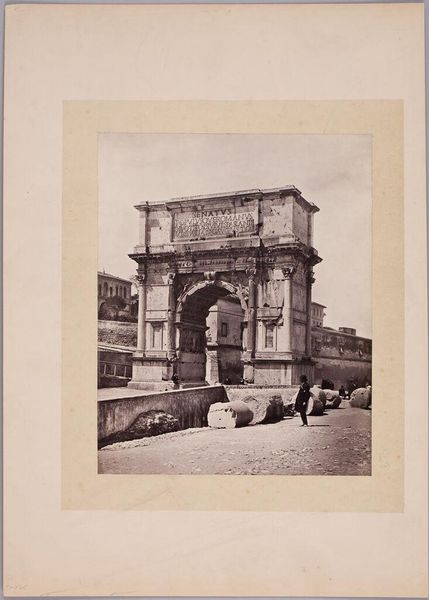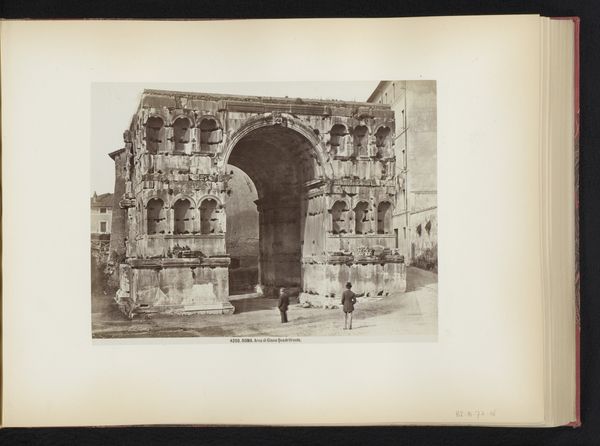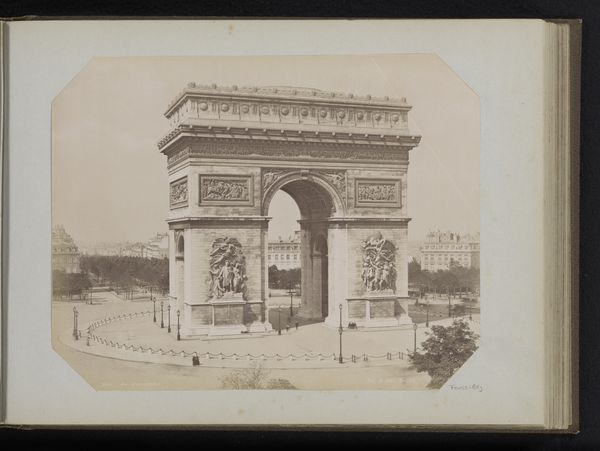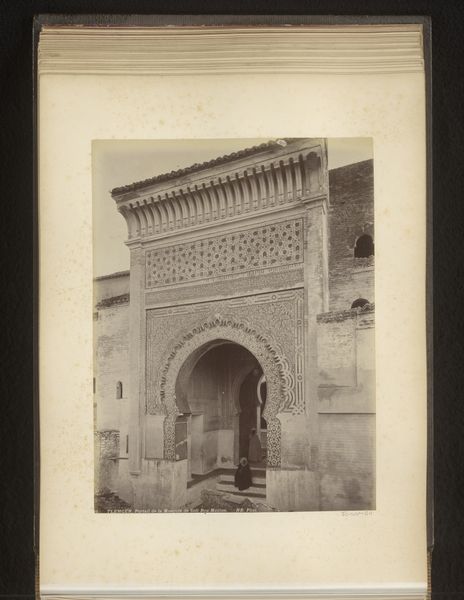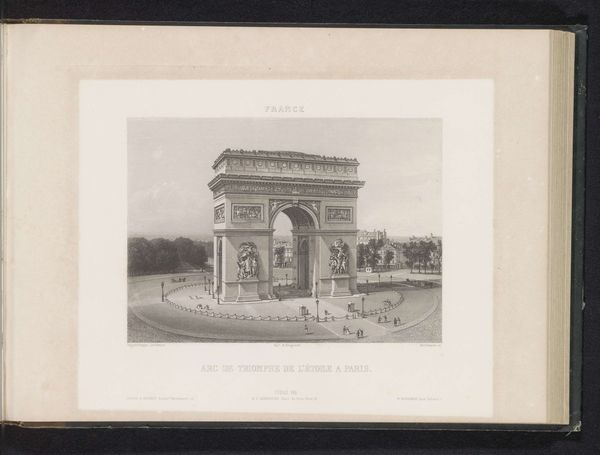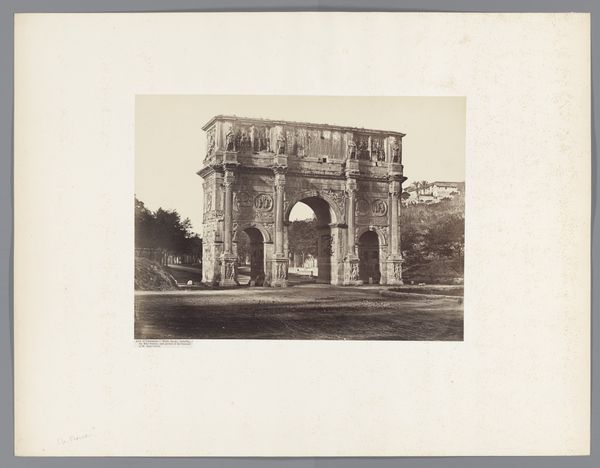
print, photography
# print
#
landscape
#
photography
#
romanesque
#
ancient-mediterranean
#
cityscape
Dimensions: height 200 mm, width 250 mm
Copyright: Rijks Museum: Open Domain
Editor: This photograph, taken before 1907 by Edizione Brogi, captures the Arch of Titus in Rome. It's fascinating to see it in this monochrome, almost ghostly, stillness. What strikes you most about this image? Curator: It's compelling how even a still photograph can convey the dynamism and continuity of cultural memory. Notice how the Arch, a symbol of Roman triumph, especially resonates given its dedication to Titus and the victories in Judea. Editor: The photograph definitely gives the monument a sense of timelessness. Do you see any other specific symbolism at play here? Curator: The very structure of the arch is significant: it represents a gateway, a passage – literally, for the victorious armies returning to Rome, but also figuratively, a passage through time. This photographer chose to portray it alone on the road. Where did all the people go? What could they represent? Editor: It’s amazing how a monument of triumph can feel so silent. Perhaps it also conveys a sense of the past speaking to the present. Curator: Precisely. Think of how the Romans themselves adapted and reinterpreted earlier Etruscan and Greek symbols. Visual culture is always in conversation with itself; it reflects layers of meaning that resonate differently across centuries. How does that cultural layering change the photograph's reception today, do you think? Editor: That makes me consider the layers of history held within the monument and how those narratives evolve over time. I see more to this picture than initially met my eye. Thanks! Curator: My pleasure! And remember, visual symbols only live through our collective understanding. Keep looking, keep questioning.
Comments
No comments
Be the first to comment and join the conversation on the ultimate creative platform.
